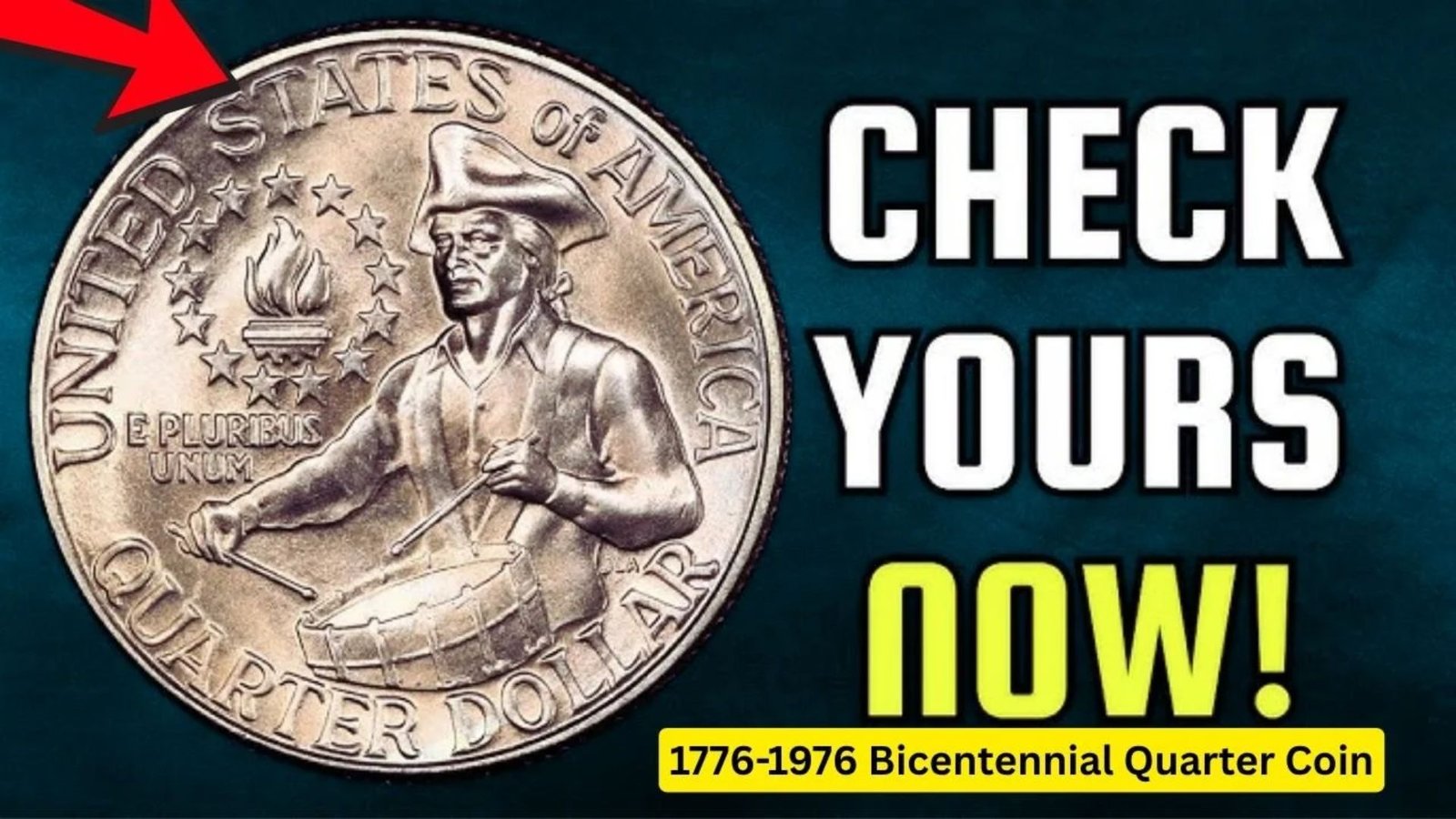Imagine finding a quarter in your pocket worth thousands! The 1776-1976 Bicentennial Quarter, minted to celebrate America’s 200th birthday, isn’t just pocket change. Some rare versions fetch jaw-dropping prices, thrilling collectors. In this post, you’ll discover its history, value, and how to spot a treasure.
What Is the Bicentennial Quarter?
The 1776-1976 Bicentennial Quarter is a special U.S. coin minted to mark 200 years of American independence. Unlike regular quarters, it features a unique reverse design—a colonial drummer—and a dual date (1776-1976). Struck in clad and 40% silver, it’s a numismatic gem for collectors.
History of the 1776-1976 Quarter
In 1973, the U.S. Mint launched a design contest to celebrate the bicentennial. Jack L. Ahr’s winning reverse, a drummer boy with a torch and 13 stars, symbolized the original colonies. Over 1.6 billion quarters were minted in 1975-1976 at Philadelphia, Denver, and San Francisco.
| Mint Location | Mintage | Composition |
|---|---|---|
| Philadelphia | 809,784,016 | Copper-Nickel Clad |
| Denver | 860,118,839 | Copper-Nickel Clad |
| San Francisco | 11,000,000 | 40% Silver (Uncirculated) |
| San Francisco | 7,059,099 | Clad Proof |
| San Francisco | 4,000,000 | 40% Silver Proof |
Why Is It Valuable Today?
Most Bicentennial Quarters are worth 25 cents, but rare versions—like high-grade silver proofs or error coins—can fetch thousands. For example, a 1976-S Silver Proof sold for $19,200 in 2019! Factors like condition, mint errors, and silver content drive value.
How to Spot a Valuable Bicentennial Quarter
Check your quarters! Look for:
- Mint Mark: “S” for San Francisco (silver or proof coins).
- Condition: High-grade (MS65+) coins are pricier.
- Errors: Doubled dies, off-center strikes, or wrong planchets (e.g., struck on a dime).
- Silver Content: Silver coins have a solid edge, not copper-colored.
| Feature | Clad Coin | Silver Coin |
|---|---|---|
| Edge Appearance | Copper-colored stripe | Solid silver edge |
| Weight | 5.67 grams | 5.75 grams |
| Value (MS65) | $1–$6 | $25–$60 |
Notable Records and Facts
- Top Sale: A 1976-S Silver Quarter (MS69) sold for $19,200 in 2019.
- Rare Error: The “No S” Proof Quarter, with only 10-15 known, fetched $52,875 in 2020.
- Melt Value: Silver quarters contain 0.148 oz of silver, worth about $5 at current prices.
- Fun Fact: No 1975-dated quarters exist—all are 1776-1976
Expert Tips for Collectors
- Get It Graded: Use PCGS or NGC for professional grading.
- Check Pocket Change: High-grade or error coins may still circulate.
- Focus on Silver: San Francisco silver coins are more valuable.
- Avoid Fakes: Beware of polished clad coins mimicking proofs.
- Store Properly: Use coin holders to preserve condition.
FAQs About Bicentennial Quarters
Q: Are all Bicentennial Quarters valuable?
A: Most are worth 25 cents, but silver, high-grade, or error coins can be worth thousands.
Q: How do I know if my quarter is silver?
A: Look for a solid silver edge and an “S” mint mark.
Q: Where can I sell rare quarters?
A: Try auctions (e.g., Heritage Auctions), coin dealers, or online marketplaces.
Q: What’s the rarest Bicentennial Quarter?
A: The “No S” Proof Quarter, with only a few known, is the rarest.
Conclusion
The 1776-1976 Bicentennial Quarter is more than a coin—it’s a piece of American history. While most are common, rare errors and silver versions can be worth a fortune. Check your change, learn to spot valuable traits, and start collecting! Share this post or explore more numismatic tips on our site.

